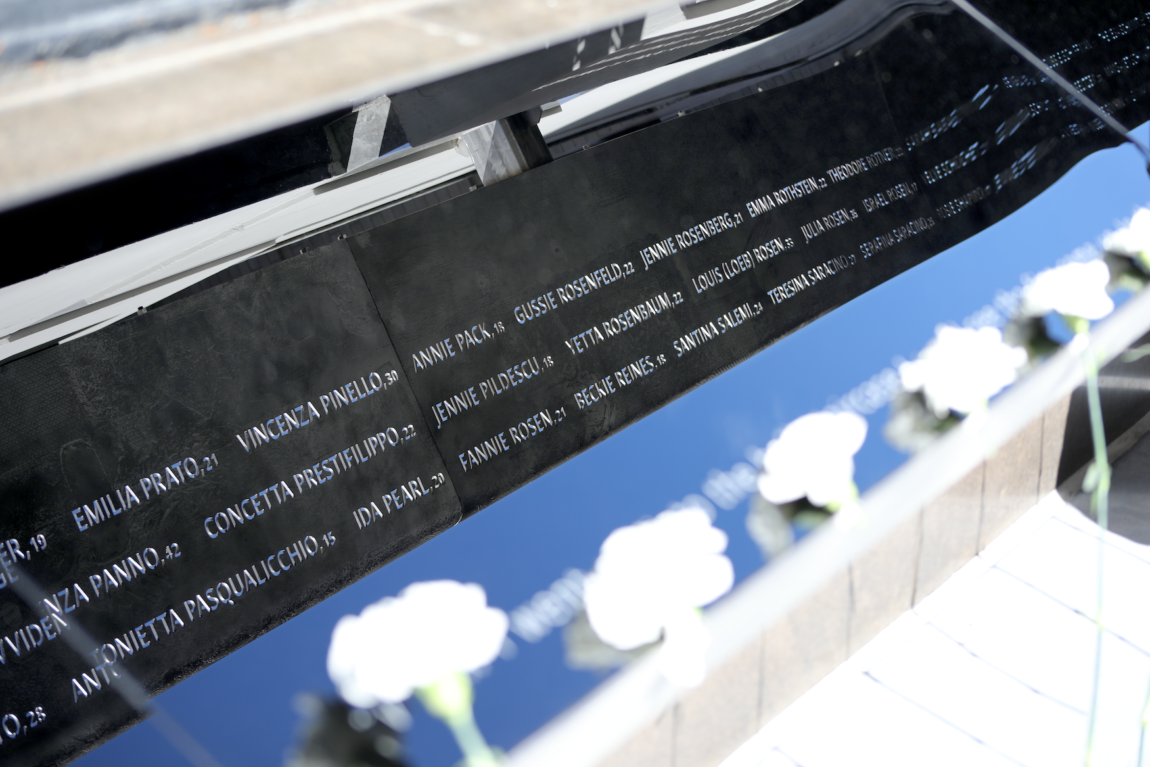Off the Clock: The Triangle Fire Memorial

In November of 1909, more than 20,000 garment workers responsible for the manufacturing of women’s blouses — then known as “shirtwaists” — walked off their jobs in New York City in a strike led by the International Ladies Garment Workers Union.
The strike, known as the “Uprising of 20,000” lasted for more than 3 months, as the workers — primarily Jewish and Italian immigrant girls — fought to improve their conditions on the job: they worked seven days a week, often for more than twelve hours straight, were mostly paid less than a dollar a day, and were required to use their own tools in poorly-ventilated factories without fire safety measures.
While many small factory owners quickly met workers’ demands, most of the largest manufacturers held out, even after further work stoppages. One of those holdout companies was the Triangle Waist Company, owned by two men known as the “shirtwaist kings,” who were so opposed to union efforts that they hired thugs to assault strikers and bribe the police to arrest them.
The Triangle shirtwaist factory fire
On March 25th, 1911, a fire broke out on the factory floors of the Triangle Waist Company, which occupied the upper floors of the Asch Building in Greenwich Village. The stairwell and exit doors to the factory were kept locked by management during working hour, in part to prevent organizers from coming onto the shop floors to speak with workers. This trapped the workers in the building, and ultimately 146 were killed as a result of the fire.
The “shirtwaist king” factory owners were acquitted of manslaughter charges and ultimately were only forced to pay a small amount to victims’ families (considerably less than they profited from insurance payments). But the brutality of the incident sparked widespread outcry — leading to a march of more than 30,000 people to memorialize the victims and broad calls for legislative action to improve workplace safety in the City.
The fire’s legacy in labor
Within a few years, the outrage at the Triangle shirtwaist factory fire resulted in the creation of new workplace fire safety laws, sanitation standards, workweek regulations, and safety inspectors. Ultimately, these local laws picked up steam as part of a larger progressive platform, later influencing President Franklin Roosevelt to implement child labor laws, a federal minimum wage, and the creation of the National Labor Relations Act — which gives private-sector workers the right to form a union — as part of his New Deal in the 1930s.
The Triangle Fire Memorial
On Wednesday, October 11th, the Remember the Triangle Fire Coalition dedicated a new memorial to the 146 victims of the fire, which was sponsored in part by our Union. The memorial is installed at the site of the fire, and tells the story of the disaster in the languages of the victims — English, Yiddish and Italian. Their names and ages are etched in steel that is attached to the building like an awning, rendering them readable only through a reflective surface that guides one to look towards the upper floors of the building where workers were trapped as the fire burned.
Located near Washington Square Park at the corner of Greene Street and Washington Place, the memorial makes for a somber but worthwhile visit for union members. “Spending some time at the site to reflect on such a tragic, pivotal moment in labor history endows one with a sense of how far we’ve come, but not without a great human cost,” said President Rich Maroko. “Our Union hopes that this memorial will help underscore the importance of proactively fighting for rights and dignity in the workplace, rather than letting tragedy set the tempo of change.”


